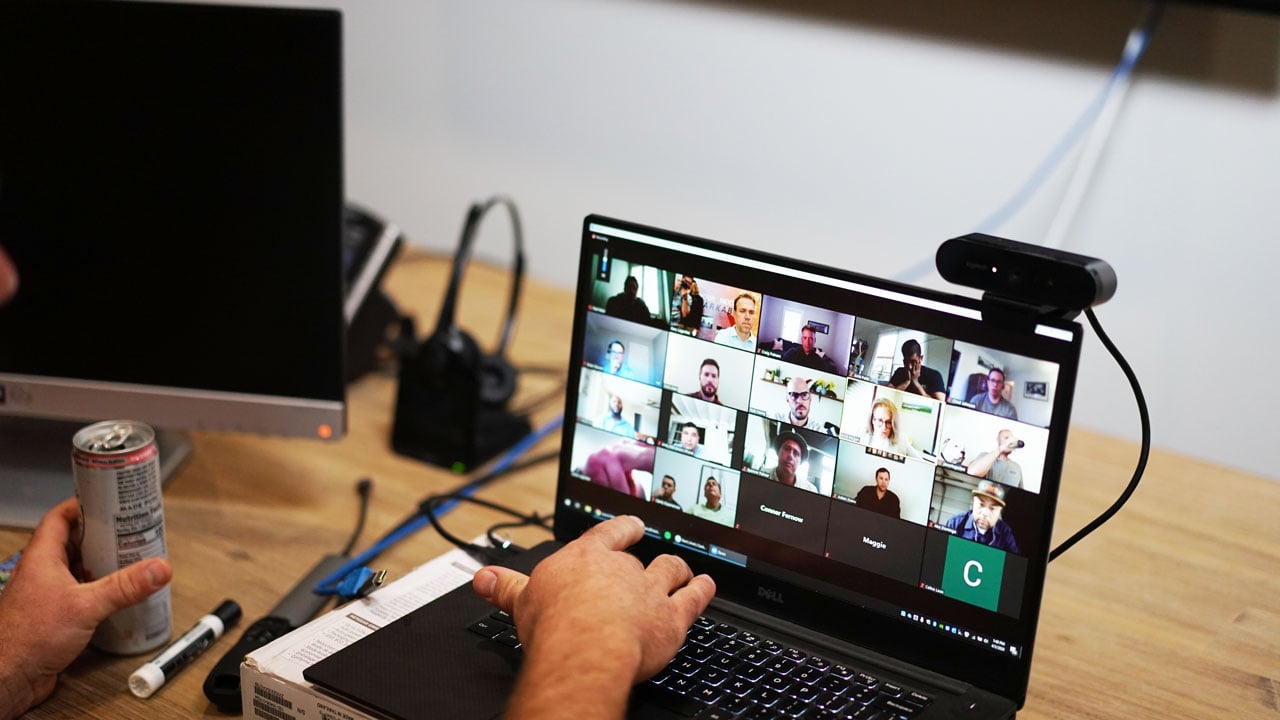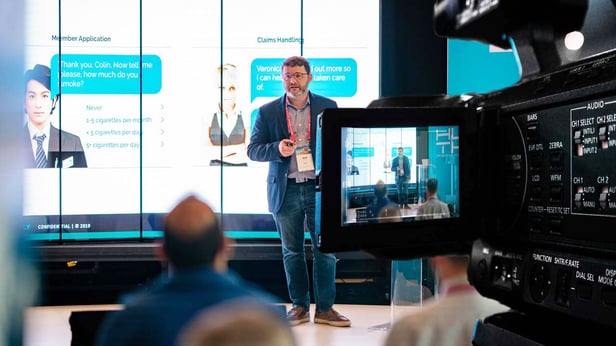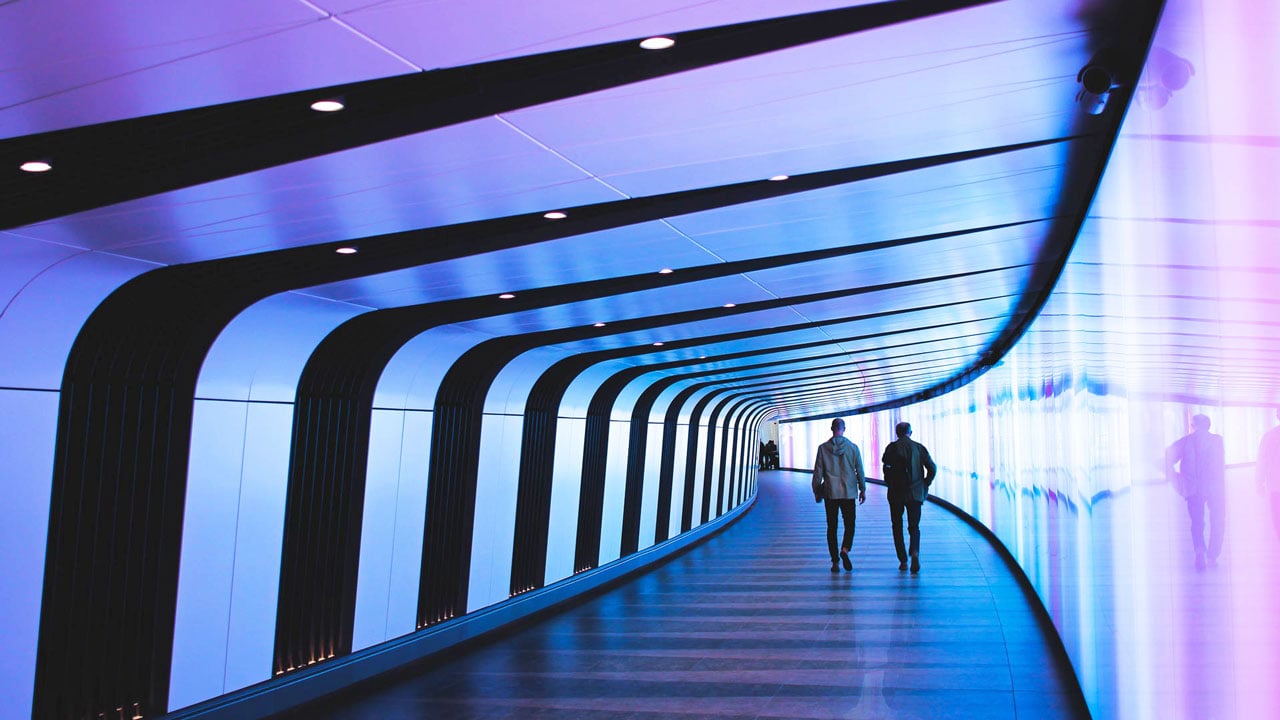Overall Production Value Of A Virtual Event
May 21, 2020 Clarity Experiences 5 min read

Clarity AV Production Insights & Advice Video Series - Episode 6
Hey everyone, welcome back! I’m here with Brian for our interview. I think we can all agree that virtual events are here to stay, so today we are going to discuss the overall production value and how you can enhance the way that your virtual event looks and feels!
- How to make a virtual event feel different than a Zoom call
- How the run of show differs in a live event vs. virtual event
- Hybrid events as a solution for the fall
- Recommendations for meeting planners
- What we miss most about live events
How to make a virtual event feel different than a Zoom call

Brian started this question out by saying that when you look at virtual events, there are a lot of components. One of the components is getting the content from the remote presenters. Brian talked about how in a Zoom call you have that video window and too many of the conferences these days are just showing you that video window only.
Brian explained that what Clarity can do with their production team is wrap that with different logos, colors, and even put text in under the presenter’s video window, to make it look more like a TV production. It makes it so the audience is consuming something meaningful of higher quality. Your virtual event can fit your brand as a company better than just having a Zoom window or one of the different types of streaming services where you only see the slide content and a talking head.
Brian said, “we have a lot of people here that can make the production value and quality feel more impactful in the background. The folks at home are just watching on one screen, whereas at a live event, there's lots of big screens and content in different places. It's hard to make it as exciting when someone is at home on their one screen, so we try to make that look as elevated as we can.”
How does the run of show differ in a live vs. virtual event?
Brian first said that the run of show works very differently in a live event than a virtual event. In a live event, you have a captive audience where everyone is in the hotel for the day. Brian explained that the general session and the keynote speaker can run quite a while and can still be engaging for the audience.
In a streaming environment or a virtual environment, Brian said you want to shorten up the content segments and have the presenter share their ideas and presentation. You want it to be short and impactful so have the audience be able to do something else. Brian talked about how you can also segment your event over multiple days.
For example, instead of having your session over a single day, you could have a general session in the morning on a Tuesday, the breakouts on a Wednesday, and then wrap up on a Thursday. Brian said, “changing that run of show makes a better experience for your attendees and allows them to consume and digest your knowledge and material in a much better way, especially when they are at home with all those distractions.”
What experience do you have with hybrid events and is it a solution for events later this year?

Brian took on this question by saying that in the past you would have an event where you have a live session with lots of people in person and you would stream it out to other audiences around the world. Typically your streaming audience is smaller than your live audience. Brian talked about how right now it’s inverted because of what we are going through with the crisis.
Brian said, “we have some meetings taking place, and most if not all of the audience is remote. As we look towards the fall, you're going to have a lot of hybrid events where more of the audience is virtual and a smaller number may be in person, and they may be in-person in different cities. Hybrid events are a great solution because it gives the presenters and the panelists a live group of people to speak too, even if it's a small group.
It still creates that live environment and production value where you have the stage, the backdrop, and the same elements as in a live event, but your audience is virtual. We believe hybrid events are going to be a big part of the fall. Most of our clients are talking with us about how to create a fall hybrid event in case they can't have a live event. A lot of that is happening and it's a way to work through these times where things are difficult.”
What would you recommend to meeting planners who are trying to plan for fall events?
To answer this question Brian said, “a lot of meeting planners are trying to figure out what they are going to do as the hotels are unsure if they are going to be able to host the events or if they can travel there with the airlines. The planners are stuck right now with how to move forward.” Brian talked about how normally right now, they would be planning the food and beverage, getting their speakers, exhibitors, and sponsors lined up. Normally the meeting planners would know what to do, but right now they are unsure.
Brian said, “my recommendation is when you look at your fall events, look at planning for both scenarios. Either way, you're still going to need presenters and know what content they are going to be sharing. Our suggestion is to go ahead and plan for a virtual event. Pre-record some of the sessions or at least be ready to film them when the time is right. If you end up being able to open up and have more people being able to travel, you can pivot quickly to a live event. Our suggestion is to keep moving forward and you'll find your way through it!”
What do you miss the most about live events and what do you look forward to seeing coming back?

Brian flipped the scrapped and asked me what I miss the most about live events since I’ve been to quite a few of them. I think the part I probably miss the most is the networking and social happy hours that you get to go to at the end of the day, which is hard to re-create virtually. I asked Brian if the Clarity team has any experience with this.
Brian answered by saying that some ideas have been coming around. There have been people doing fun stuff with happy hours and with social events. Brian said that the exhibit areas, sponsorship areas, and the reception/networking areas are very difficult to replicate on virtual events.
That’s A Wrap!
Maybe next week we will be back to talk about how you can create that exhibit hall and that social happy hour post-event! Thank you, everyone, for watching, and please feel free to leave questions and comments below and we will be back next week with episode 7!


